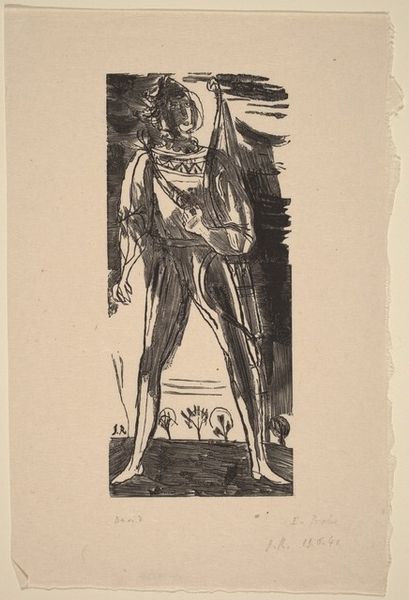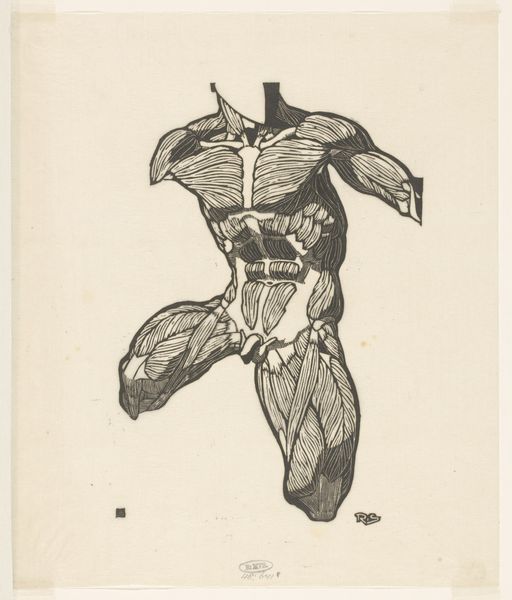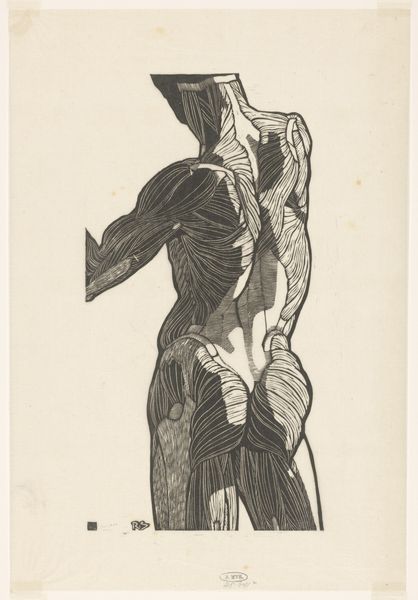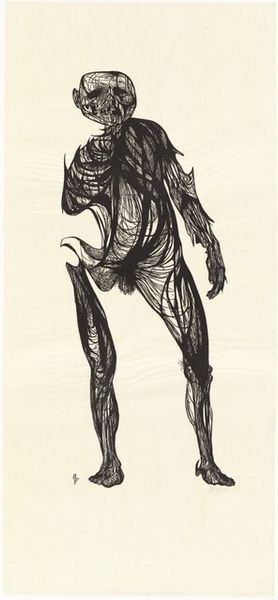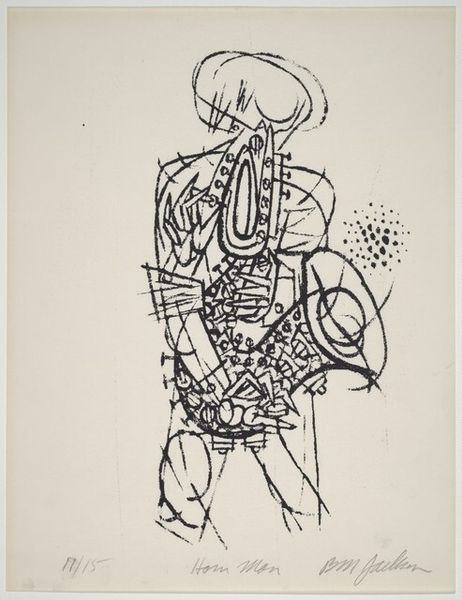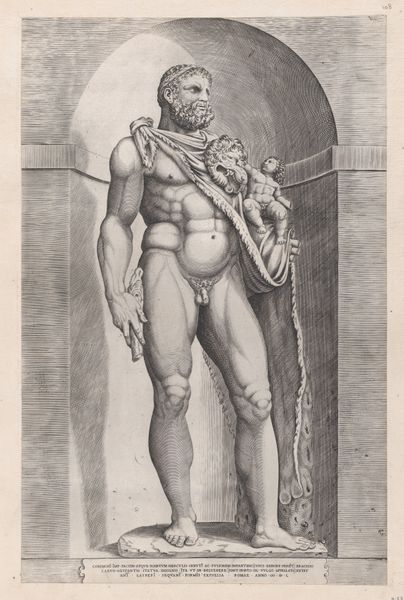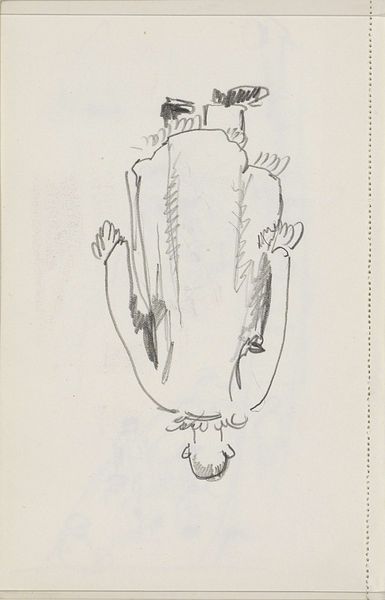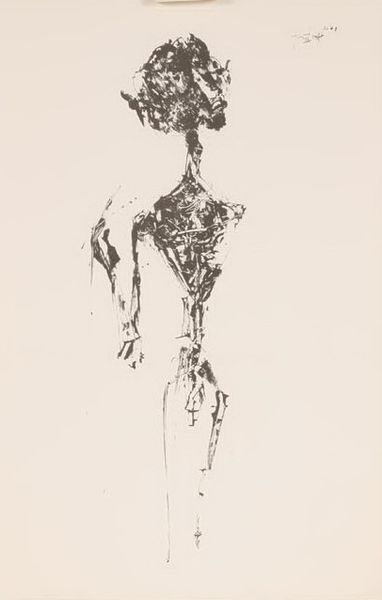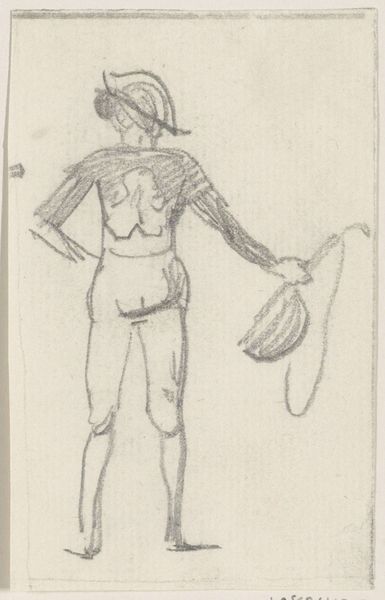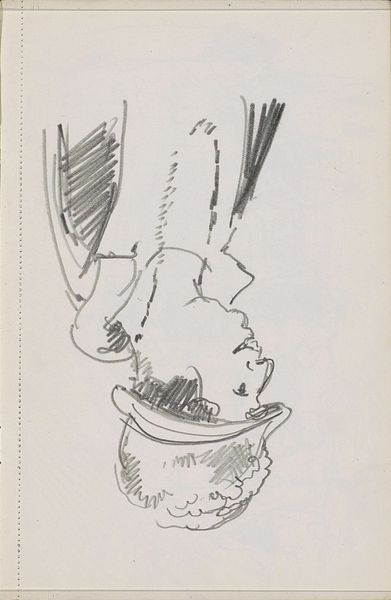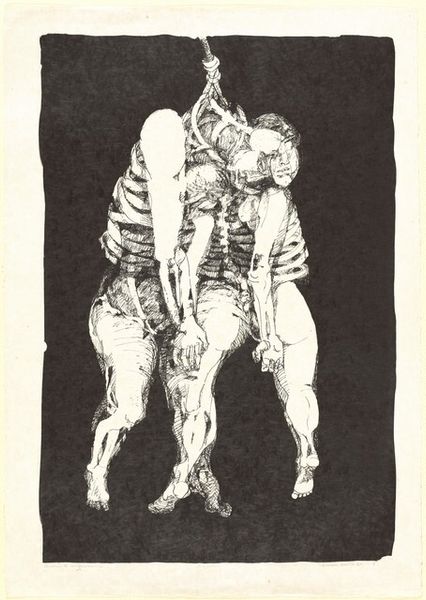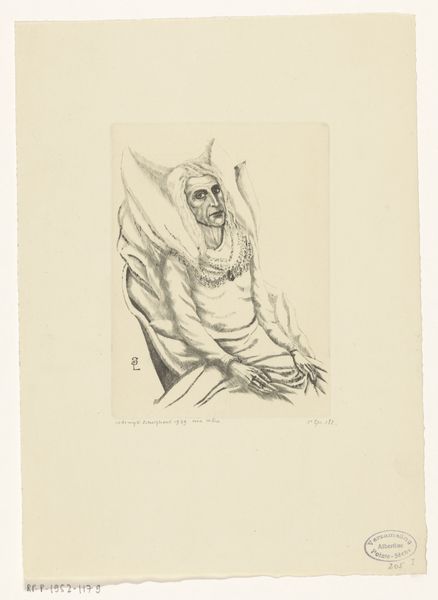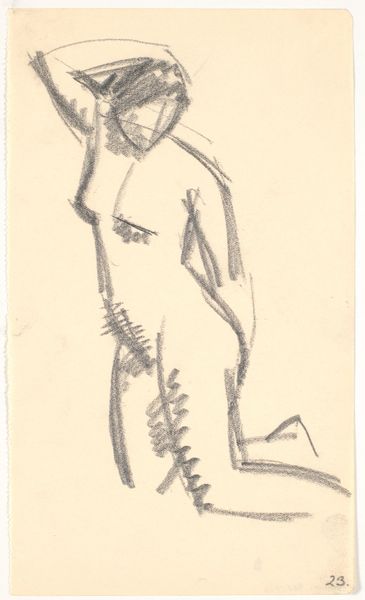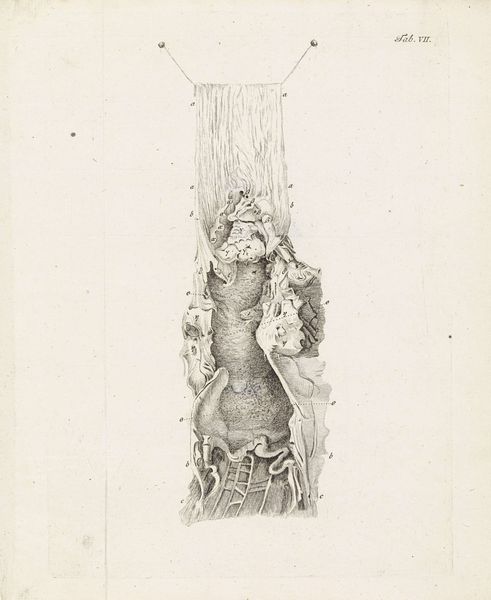
Dimensions: image: 305 x 140 mm
Copyright: © Tate | CC-BY-NC-ND 4.0 DEED, Photo: Tate
Curator: Cecil Collins’s ink drawing, "The Fool," presents a lone figure carrying a heart and an owl. Its stark black lines and minimal shading create a stark, ethereal quality. Editor: It's intriguing how the figure almost floats on the page, yet feels grounded by the weight of the symbolism; the fool, the heart, the owl—it feels heavy despite the lightness of the execution. Curator: Indeed. The composition, dominated by the Fool's slender, patterned body, draws the eye up. The owl, perched almost protectively, provides a visual anchor. Editor: I see the figure as a challenge to societal norms, a jester existing outside boundaries. It makes me think of marginalized identities, offering wisdom and love that the world often scorns. Curator: I can appreciate that perspective. However, I am drawn to the formal elements—the contrasting textures, the figure's elongated limbs, and the overall delicate balance. Editor: Perhaps we can agree that Collins has created an evocative and enduring image, open to multiple readings. Curator: A resonant study that beautifully highlights the power of line and form, undoubtedly.
Comments
Join the conversation
Join millions of artists and users on Artera today and experience the ultimate creative platform.
tate 7 months ago
⋮
In 1942 Collins began writing The Vision of the Fool. First published in 1947 this essay highlighted his vision of what he described as the ‘mechanical jungle of the contemporary world’ (quoted in Keeble, p.74). Throughout the essay Collins links the Fool with the ‘Saint, the artist, the poet’ (Keeble, p.81) as the saviours of life. He explains: ‘modern society has succeeded very well in rendering poetic imagination, Art, and Religion, the three magical representatives of life, an heresy; and the living symbol of that heresy is the Fool. The Fool is the poetic imagination of life, as inexplicable as the essence of life itself’ (Keeble, p.73). The fool became a recurring image for Collins, appearing in many of his paintings and prints as an innocent figure who, although having no place in modern society, has the vision which is necessary to find fulfilment and eventual reward.

